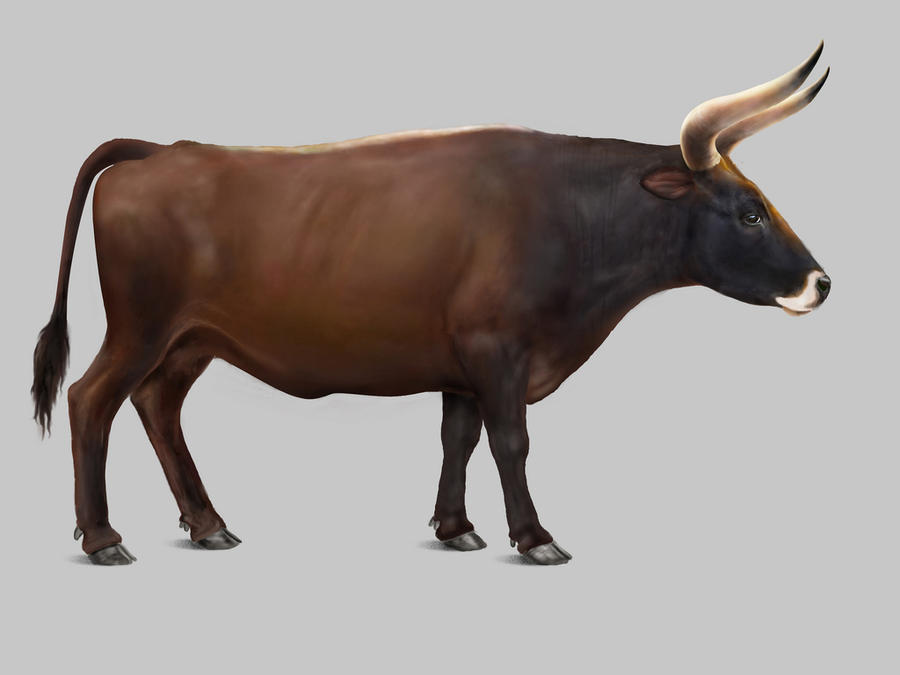Tom Hammond
is a professional artist who is, just like me, interested in doing aurochs life
restorations as anatomically correct as possible. We do it in a similar way by
working directly with photos of skulls or mounted skeletons of well-preserved
aurochs specimen, and looking for living animals that serve as best anatomic
comparison. However, he is a much better artist than I will ever be and his
style has inspired and is still inspiring me a lot. He has produced some of the
most accurate aurochs reconstructions available on the web that I want to show
you below. All rights of these images belong to Tom Hammond and are linked here with permission.
1. The Lund
bull
 |
| ©Tom Hammond |
2. The
Sassenberg bull
 |
| ©Tom Hammond |
 |
| ©Tom Hammond |
The
Sassenberg bull was a senile specimen with worn teeth and a particularly
long-snouted head. It probably reached more than 170 cm in life.
3. The Vig
bull
 |
| ©Tom Hammond |
The Vig
bull is an often-mentioned specimen due to the fact that it was found with
several arrow-caused damages on its skeleton. It’s also remarkable because of
its comparably upright and “cowish” horns, and the eye sockets are not as
prominent as in other aurochs specimens. Tom Hammond’s reconstruction illustrates
particularly very well what I imagine the head of this specimen to look like.
4. The
Berlin skull
 |
| ©Tom Hammond |
The Berlin
skull is a really large one; when I saw it the first time (before I was into
the aurochs), I was struck by its size – next time I’ll take a measuring tape
to measure it. Tom Hammond did this beautiful reconstruction using the photo I
took, and the outcome resembles the head of some long-snouted Lidia bulls, just
with mightier and slightly more upright horns.
5. The
London skull
I don’t
know if the skull displayed at the Museum of London is the largest aurochs
skull ever found (which is 92 cm long!), but it is certainly impressive. The
life reconstruction shows that this bull aurochs was not hyper long-snouted
compared primitive cattle, and with that and its wide-ranging but sharply inwards
curving horns it reminds me of the head of the Maronesa bull that now lives
semi-feral in the Portuguese rewilding reserve Faia brava.
6. Camebridge
cow
 |
| ©Tom Hammond |
The
Camebridge specimen has horns more upright and less strongly curved than large
bull skulls, the eye sockets are not prominent at all and the trunk looks
rather heavy. It’s 145 cm high at the shoulders. For me this makes it likely
that it is a cow; yet it has a pretty large hump. Tom Hammond’s reconstruction
shows the colour of a female Aurochs very nicely, exactly as we see it at
Chauvet. As I mentioned previously, I did a reconstruction of the same specimen
as well.
7. The
Sassenberg cow
 |
| ©Tom Hammond |
This cow
from Germany is more gracile than the Camebridge cow and also has smaller
horns. The reconstruction beautifully shows what an athletic animal the aurochs
was, very much unlike docile domestic cows.


These wonderful images (and those of "Pachyornis" too) are of great value. They help us understand the animal so much better than do most of the images that have come before. Surely they will influence the selection process in the back breeding projects. Bravo!
ReplyDeleteThank you very much!
Delete